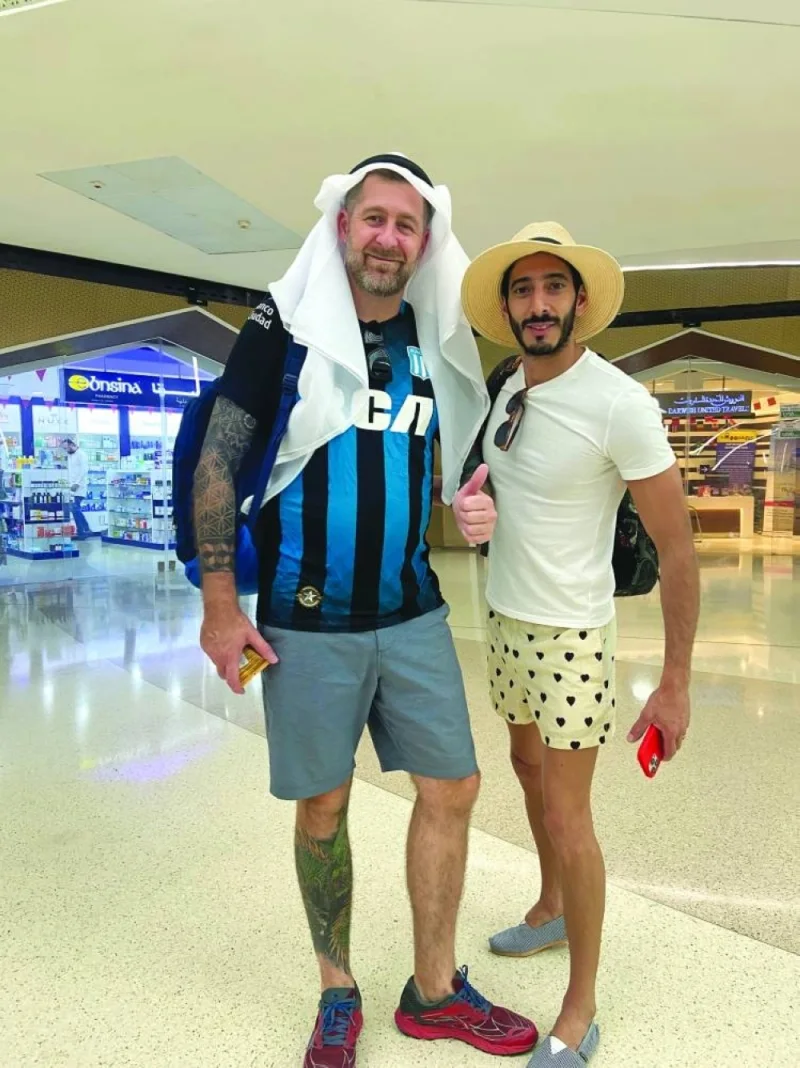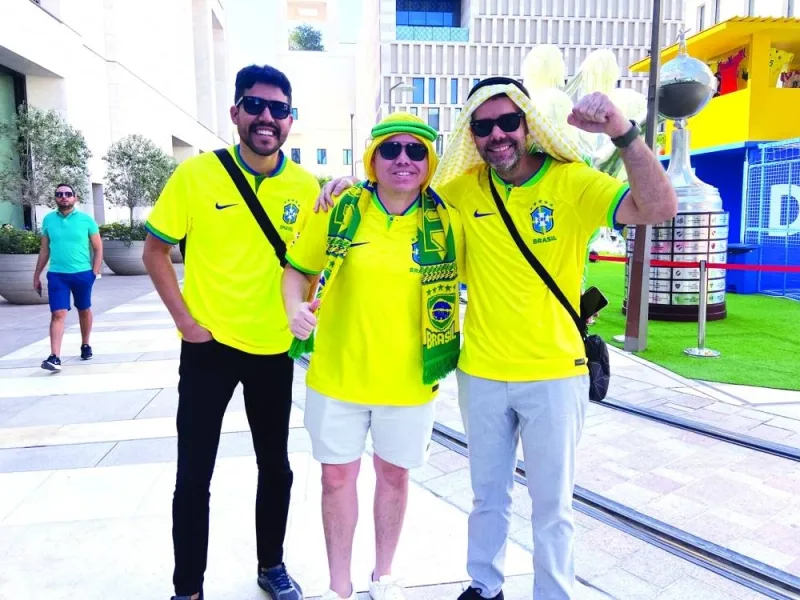The first FIFA World Cup in the Middle East is helping to keep Arab tradition intact in every sense, with many foreign fans opting for traditional Arab garb.
The traditional long-sleeved and ankle-length robe *thobe, the headscarf *ghutra and the small woven ring *igal have gone trendy within the stadiums and without.
Many wear traditional Arab clothes to acquaint themselves to the culture of the region.
“This part of the world isn’t very familiar to us,” Brazil fan Felipe Esteves told *Gulf Times. “We are here to explore while enjoying every moment.”
Esteves and his friend Rodrigo Camara bought *ghutra and *igal (also spelled *iqal and *agal) from one of the shops at Souq Waqif, where the merchants have put a large collection of traditional clothes on display.
*Ghutra, *igal and *thobe are available in colours matching the flags of countries participating in the World Cup.
Shops selling multicolour *ghutra and *igal are also at metro stations, Msheireb Downtown Doha, Old Doha Port, and Katara.
“We catch the attention of the crowd while donning the traditional clothes. These are quite affordable and everybody wants to get one,” Camara said.
Qatar has focused much on adding the authentic Arab colour to show its heritage in World Cup activities.
The official World Cup mascot La’eeb is the Arab *ghutra or the famous Qatari-Arab costume, embodied in a person and flirting with football.
The official main poster focuses on the football itself, featuring the *igal alongside typography expressing the voices of a cheering crowd.
“Countries tend to show their heritage while highlighting their customs, traditions and clothes,” said Argentina fan Juan Estrada. “We wear these since we are in Doha and want to adhere to the local tradition.”

Argentina fans wearing the ghutra and igal.

Brazilian fans wearing ghutra and igal. PICTURES: Shafeeq Alingal

